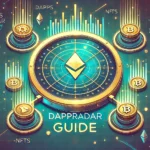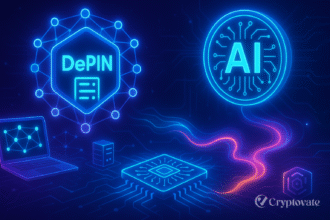– Ad –
| Getting your Trinity Audio player ready... |
Let’s get straight to it: if you’ve ever wondered how do crypto transactions work, you’re not alone. The concept may sound complicated, but once you zoom in, it’s simply a digital conversation between wallets, miners, and a public record known as the blockchain. In this guide, we’ll take you through the process one step at a time.
Step 1: It Starts in Your Wallet
Think of your crypto wallet as a control panel. When you decide to send crypto, say Bitcoin, you’re not really “sending” coins the way you’d Venmo someone rupees. What you’re doing is creating a crypto transaction that unlocks a chunk of data (called a UTXO, more on that soon) and redirects it to someone else’s wallet address.
Behind the scenes, your wallet chooses which chunks of your available balance to send. These chunks are called UTXOs (Unspent Transaction Outputs), leftovers from previous transactions you’ve received.
If your available UTXOs total more than what you want to send, your wallet returns the rest back to you as “change.” Yep, just like real-life cash. This “change” usually lands in a new address within your wallet.
Step 2: Sign It Like You Own It
Once your transaction is ready, your wallet digitally signs it using your private key. This is cryptographic proof that you have the right to move these funds. The signature doesn’t reveal your private key, it just proves your authority to spend the coins.
This is also the stage where gas fees or transaction charges are applied. Your wallet calculates a fee based on how busy the network is and how fast you want your transaction to go through.
Step 3: Validated and Waiting in the Mempool
Once your transaction hits the network, it doesn’t go straight onto the blockchain. First, it goes into what’s known as the mempool—a sort of waiting area where unconfirmed transactions sit until a miner selects them.
Each node validates it:
- Are the digital signatures valid?
- Are the inputs real, unspent coins?
- Are you trying to double-spend? (Bad idea, by the way.)
If it checks out, it’s eligible to be mined.
Step 4: Mining and Confirmation
Here’s where miners come in. They bundle valid transactions into a block and compete to solve a cryptographic puzzle (Proof-of-Work). Whoever solves it first earns the right to add the block to the blockchain and receives the block reward along with the transaction fees.
Once your transaction is added to a block, it gets a confirmation. With every new block added after that, it becomes harder to reverse. Usually, 6 confirmations are the gold standard for security.
Quick Detour: What Are UTXOs?
If you’re using Bitcoin or similar blockchains, your wallet doesn’t track a running balance like a bank. Instead, it looks at UTXOs, Unspent Transaction Outputs. Think of them like digital cash bills.
When you send 0.7 BTC:
- Your wallet might pull a 1 BTC UTXO
- Spend 0.7 BTC to the receiver
- And return 0.3 BTC to yourself as “change” by sending it to a new wallet address you own.
This UTXO model helps prevent fraud and makes the blockchain more efficient.
Bonus: The Lightning Network
For faster and cheaper crypto transactions, some users open off-chain channels using the Lightning Network. You lock funds into a two-party channel and exchange value without touching the blockchain, until the channel closes. It’s perfect for microtransactions or high-frequency payments.
Also Read: Why Are My Crypto Transactions Pending? Common Causes and How to Fix It
Recap: Crypto Transactions, Decoded
Let’s put it all together:
- You create a transaction on your wallet
- It’s signed with your private key
- Broadcast to the network and verified
- Waits in the mempool
- Miners include it in a block
- Once confirmed, it’s locked into the blockchain forever
So, how do crypto transactions work? At their core, it’s all about signatures, consensus, and keeping a transparent record that anyone can verify. No middlemen, no banks, just math, code, and a shared global ledger.
FAQs
What is a crypto wallet’s role in a transaction?
A crypto wallet creates and signs a transaction using your private key, selecting unspent funds (UTXOs) to send to another address while calculating fees.
What happens to a crypto transaction after it’s sent?
It enters the mempool, where nodes verify its validity. Miners then include it in a blockchain block, confirming it through a process like Proof-of-Work.
What are UTXOs in cryptocurrency?
UTXOs (Unspent Transaction Outputs) are like digital cash bills, representing unspent funds in your wallet that are used to create new transactions.
How does the Lightning Network make crypto transactions faster?
The Lightning Network enables off-chain transactions through two-party channels, allowing quick, low-cost payments without immediate blockchain recording.


















